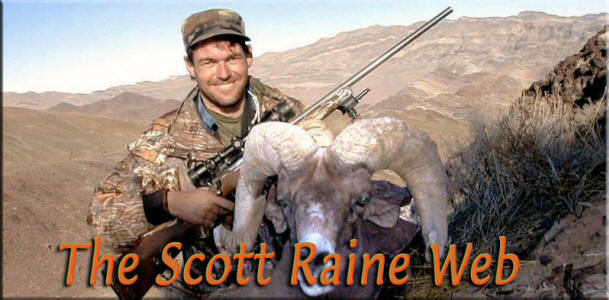Predation, Water, Wildlife,
and the Stewards of our Lands
by Scott Raine
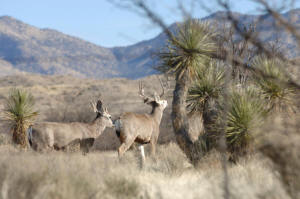 Nevada
- What goals should biologists be working towards? Nevada
Department Of Wildlife (NDOW) Biologists need to work towards
the goal of enhancing wildlife. Biologists do not need to be
studying that which every biologist has studied since the
beginning of time. The effects of predators on their prey are
not in doubt. Every biologist does not need to re-invent the
wheel. Lions, Coyotes, Ravens, Magpies, and all other predators
hunt and kill every animal they can, including those yet to be
born. Those Fangs and Claws are made for killing, and that’s
just what they will do. Studies to determine the age of the
predator population and attempts to harvest the “older more
experienced killers” who many NDOW biologists blame for a
greater part of predation are irrelevant and not useful. Perhaps
it may be true that older predators kill more of some population
than younger ones, but so what? The next generation is in
training and is killing something. They are eating, and they
will be the new experienced killers in the length of time it
takes to complete a study.
Nevada
- What goals should biologists be working towards? Nevada
Department Of Wildlife (NDOW) Biologists need to work towards
the goal of enhancing wildlife. Biologists do not need to be
studying that which every biologist has studied since the
beginning of time. The effects of predators on their prey are
not in doubt. Every biologist does not need to re-invent the
wheel. Lions, Coyotes, Ravens, Magpies, and all other predators
hunt and kill every animal they can, including those yet to be
born. Those Fangs and Claws are made for killing, and that’s
just what they will do. Studies to determine the age of the
predator population and attempts to harvest the “older more
experienced killers” who many NDOW biologists blame for a
greater part of predation are irrelevant and not useful. Perhaps
it may be true that older predators kill more of some population
than younger ones, but so what? The next generation is in
training and is killing something. They are eating, and they
will be the new experienced killers in the length of time it
takes to complete a study.
How many studies does it take?
How many Bachelors, Masters, and Doctoral degrees does it take
to figure out what every hunter and woodsman has known since the
beginning of time?
The path of NDOW should be
clear and simple: Who is going to hunt our big game? Someone or
something is going be killing our Big Game animals, it is simply
up to us to decide who or what. If we leave the predators alone,
they will be doing our hunting for us. If we remove the
predators and don’t hunt game animals ourselves then famine and
disease will do the killing. We don’t get to decide WHAT happens
to our wildlife, we only get to determine WHO or what does it.
It seems to this author that
it is a lot easier to manage game and maintain optimal game
levels when the hunters have to purchase their tags. The other
killers - predators, disease, and famine- don’t need tags.
Reducing predators to a
manageable level, and keeping their level reduced, encouraging
water development throughout the State, and reducing the threats
of wildfires while enhancing the responsible use of our lands
through increases in grazing should be the focus of our
department of wildlife.
Allies in the battle to
increase a healthy game population: Ranchers, cattlemen,
sheepherders, politicians, BLM…
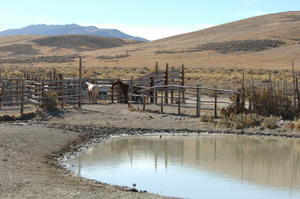 Ranchers,
cattlemen, sheepherders, and related groups of people are those
who should be the greatest allies of wildlife within the State.
The long-term development of all our living resources benefit
from the same basic tenants of good stewardship.
Ranchers,
cattlemen, sheepherders, and related groups of people are those
who should be the greatest allies of wildlife within the State.
The long-term development of all our living resources benefit
from the same basic tenants of good stewardship.
Our groups both benefit from
water developments, predator control, and good grazing
practices. One example of this that has come to the forefront in
recent years is wildfires, and the old maxim stands: If you
don’t graze it, you will burn it. Grazing is perhaps our best
tool to use in the prevention of wildfires. One of the poorest
practices that is being exercised right now is the concept of
letting the land “rest” after a fire. Scientific research done
by the University of Nevada has shown that this “rest” from
grazing has no benefit to the land. These studies are ignored
for political reasons.
What prohibiting grazing after
a fire clearly does do is let the grasses grow so heavily that
the area will easily burn again.
Land that has had mild to
moderate amounts of grazing will burn far more slowly and any
fires will be far easier to contain than those on un-grazed
land.
Grasses and young forbs are
the “transition fuels” that allow wildfires to travel along
between brush and larger fuels. By reducing the concentrations
of these transition fuels, fire spread rates are greatly
reduced.
The use of old-style crested
wheat seeding creates lands that are both higher quality grazing
lands and more fire resistant areas than those seeded with most
of the seed mixes that have come into vogue within the past
decade.
Mountain Springs,
wildlife, and grazers
In a desert climate water is
life. In many areas of Nevada, water, not feed, is the limiting
factor for wildlife throughout much of the year.
Many mountain ranges and
valleys in Nevada are covered in feed that is never touched by
animals, but wildlife is very limited. The reason is obvious, it
is a desert, it can be many miles or tens of miles between the
nearest permanent water sources.
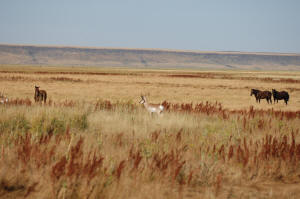 The
greatest boon to water development for the direct benefit of
wildlife throughout the State of Nevada over the last century
and a half has been our ranchers and herders.
The
greatest boon to water development for the direct benefit of
wildlife throughout the State of Nevada over the last century
and a half has been our ranchers and herders.
NDOW and several hunters
organizations build and maintain many “guzzlers” throughout the
State to benefit wildlife and give them the water they need to
make it through the dry periods. For every guzzler that NDOW has
installed there are many dozens of other water developments that
have been made and maintained throughout the State over the
years. These other water developments were for the most part
installed by ranchers and sheepherders to the mutual benefit of
their herds and the local wildlife. The many thousands of water
troughs, spring boxes, water tanks, and other water developments
installed by ranchers never cost the taxpayer anything, and yet
our wildlife has flourished as a direct result of these efforts.
Guzzlers such
as these provide vital water sources in areas in which wildlife
could otherwise not exist in the hot summer months. While
guzzlers are vital water sources, without aggressive predator
management they become "Cat Feeders", funneling big game animals
to make the decision of dying or thirst or getting their throats
torn out at the only drinking hole for dozens of miles around.
Another major benefit of water
developments installed by ranchers over the guzzlers installed
by the government and private groups is that in many cases where
ranchers develop the water, they have developed it in multiple
locations throughout an area, usually no more than five miles
apart, as opposed to the usual single guzzler within a large
area. For ranches this makes sense, as it allows the use of a
large portion of the range while minimizing weight-losing travel
for their animals to water.
Why is this important, one may
ask? Deer and bighorn commonly travel miles to water. Simply
put, installing a single water source in an area with no
alternatives creates a perfect environment for predators,
especially mountain lions. Many guzzlers installed throughout
the State have become “Cat Feeders” during the hot summer months
when the wildlife face the decision of either dying from thirst
or getting their throats torn out at the only water source for
10 miles. All the lions do is hang around the guzzlers and wait
for lunch to come to them. Ranchers and grazers with predation
problems either eliminated the predators or went broke.
The majority of old water
developments and “spring boxes” were all installed by ranchers
over the years. In modern days with the reduced grazing
allotments, and a negative attitude towards grazers by the
government, many of these water improvements are not being
repaired or maintained and are going dry. All over the northern,
central, and southern deserts there are dry tanks and troughs
where once water was funneled into tanks during spring runoff,
or pumped with windmills or gas pumps. These old wells are dry,
and wildlife are going thirsty. When the ranchers leave, the
water dries up and the deer and the antelope either go elsewhere
or die.
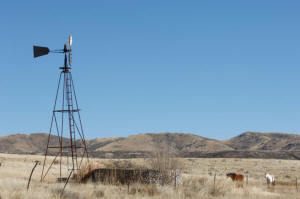 Increases
in grazing and cooperative efforts by NDOW to encourage grazers
to develop the water resources in their areas are far more
efficient and effective ways of increasing and maintaining our
water resources than attempting to use taxpayer funds to finance
these water development projects.
Increases
in grazing and cooperative efforts by NDOW to encourage grazers
to develop the water resources in their areas are far more
efficient and effective ways of increasing and maintaining our
water resources than attempting to use taxpayer funds to finance
these water development projects.
Any hunter who has spent a lot
of time in the mountains can attest to the great number of
springs that have been destroyed by feral horses and the large
number of dry reservoirs and water tanks to be found throughout
the State. By encouraging, and cooperating with, ranchers in
developing and enhancing these springs and water catchments,
including assuring that ranchers can legally bring in the
resources they need to do a proper job of spring and well
enhancement without a mountain of red tape, we can greatly
increase new water sources in remote locations, as well as
preserve those that still exist, with minimal or no taxpayer
expense. Remember, Nevada is the driest state in the Union and
water is "gold."
The Greatest Allies of
Wildlife
Cattle, sheep, and wildlife go
hand in hand. Where the land is improved for the use of
domesticated animals, it is almost always improved for the use
of wildlife. Those that live on the land are the greatest
potential allies of wildlife and should be treated by NDOW, the
BLM, and all governmental organizations with the greatest
possible respect. They should be given the widest possible
latitude and encouragement to do what they need to do to enhance
their stewardship of the lands around them, whether it be water
development or predator control, especially on those federal and
State lands that they graze by permit.
